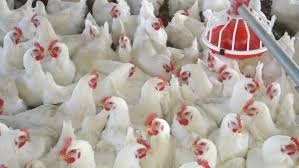Salt Toxicity in Livestock

Salt Toxicity, also known as Sodium Toxicity or Salt Poisoning, is a serious condition that can affect all livestock species, particularly if there is an abrupt change in salt intake. This condition arises from excessive salt consumption, leading to an imbalance in electrolyte levels and potentially severe health consequences. This guide provides a comprehensive overview of Salt Toxicity, including affected species, symptoms, prevention, and treatment strategies.
What It Is
Salt Toxicity occurs when animals consume excessive amounts of salt (sodium chloride), which can disrupt electrolyte balance and lead to severe health issues. The condition often arises when there is a sudden increase in salt intake or inadequate access to fresh water. Excess sodium in the body can cause dehydration, neurological symptoms, and other complications due to its impact on fluid balance and nerve function.
Species Affected
- All Livestock: Salt toxicity can affect any livestock species, including cattle, sheep, goats, horses, and pigs.
- Particular Risk Groups: Animals that have been deprived of salt for a period and then suddenly exposed to high levels of salt are at higher risk. This is often observed in situations where salt blocks or licks are introduced abruptly.
Symptoms
Symptoms of Salt Toxicity can vary but typically include:
- Excessive Thirst: Increased water consumption as the body attempts to counteract dehydration and electrolyte imbalance.
- Neurological Symptoms: Symptoms such as incoordination, circling, blindness, and seizures due to the effects of high sodium levels on the nervous system.
- Abdominal Pain: Signs of discomfort, including bloat or distension.
- Vocalization: Increased vocalization or agitation as a result of discomfort or neurological effects.
- Death: In severe cases, salt toxicity can lead to death if not promptly addressed.
Prevention Strategies
Preventing Salt Toxicity involves careful management of salt intake and ensuring adequate access to water:
- Gradual Introduction:
- Introduce Slowly: Gradually introduce salt supplements or salt blocks to avoid sudden increases in salt intake. Allow animals time to adjust to the new salt levels.
- Monitor Consumption: Observe how much salt is being consumed and adjust feeding practices if necessary.
- Access to Fresh Water:
- Provide Constant Access: Ensure that animals always have access to clean, fresh water to help maintain proper hydration and support normal electrolyte balance.
- Check Water Supply: Regularly check and maintain water sources to ensure they are clean and functional.
- Balanced Diet:
- Provide a Balanced Diet: Ensure that the overall diet is balanced and meets the nutritional needs of the animals, including appropriate levels of salt.
- Regular Monitoring:
- Observe Behavior: Regularly monitor animals for any changes in behavior, drinking patterns, or signs of discomfort.
- Health Checks: Conduct routine health checks to detect and address any early signs of salt toxicity.
Treatment Strategies
If salt toxicity is suspected, prompt treatment is essential:
- Immediate Actions:
- Remove Salt Sources: Immediately remove access to salt sources to prevent further consumption.
- Provide Fresh Water: Ensure that animals have access to clean, fresh water to help flush out excess sodium and alleviate dehydration.
- Veterinary Care:
- Consult a Veterinarian: Seek professional veterinary assistance for severe cases or if symptoms persist. The veterinarian may administer intravenous fluids to help correct electrolyte imbalances and support recovery.
- Monitor and Treat Symptoms: The veterinarian may also provide treatments to manage neurological symptoms and support overall recovery.
- Supportive Care:
- Hydration: Continue to provide fresh water and consider electrolyte solutions if recommended by the veterinarian.
- Monitor Recovery: Observe the affected animals for improvement and monitor their condition closely during recovery.
- Prevent Recurrence:
- Review Salt Management: Evaluate and adjust salt management practices to prevent future occurrences of salt toxicity.
- Educate Staff: Ensure that farm staff are trained in proper salt supplementation practices and the importance of gradual changes in salt intake.
By implementing these prevention and treatment strategies, you can effectively manage and prevent Salt Toxicity in your livestock, ensuring their health and well-being.
For more information and support on livestock health and nutrition, visit LivestockWellness.com.